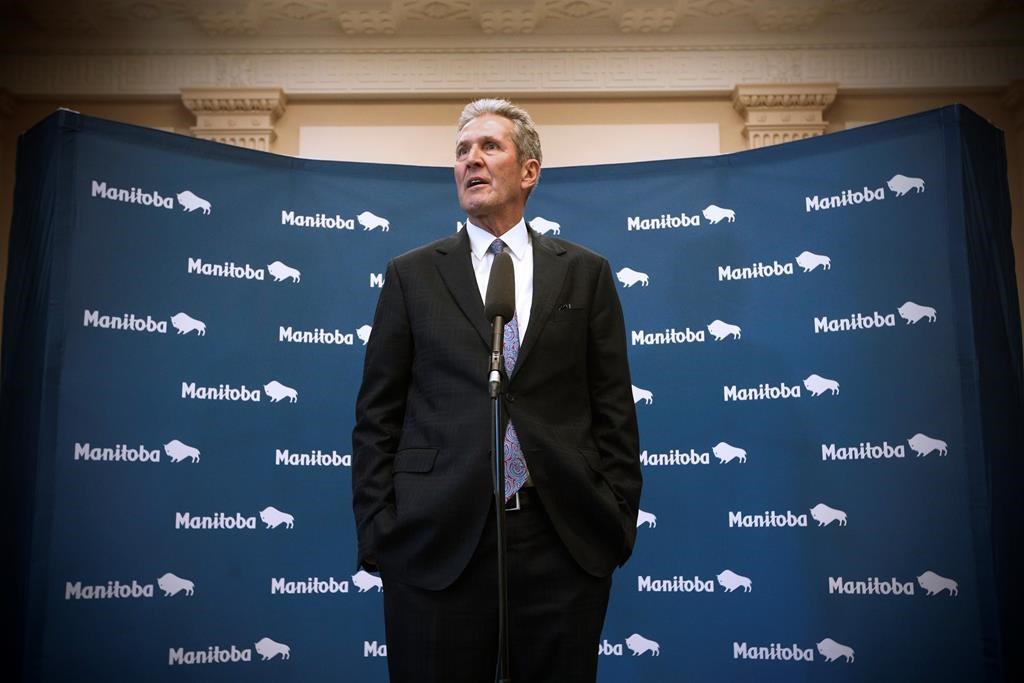Manitoba Premier Brian Pallister says he is thinking about appointing a second health minister to help the province fight its high COVID-19 case numbers.

Pallister says the move would not be a criticism of Health Minister Cameron Friesen, but would help ease the workload in a department that, even in non-pandemic times, is the government’s largest.
“It’s not a reflection on my faith or trust in Cam Friesen. Nobody has worked harder,” Pallister said in a year-end interview with The Canadian Press.
“It is (a workload issue) and it’s especially onerous during an unprecedented pandemic.”

Pallister said he doubts that Manitoba’s health minister a century ago “had much fun during the Spanish flu period either.”
A few other provinces already have two ministers for health. In Ontario, one is dedicated to long-term care. In British Columbia, one is focused on mental health and addictions.
Pallister hinted a second health minister in Manitoba would be temporary until the pandemic is over.
“I always reconsider the organizational structures that we have, but I don’t want to make permanent changes that are a consequence of short-term demands either.”

Friesen, who served as finance minister before the last major cabinet shuffle in 2018, has come under heavy criticism during the pandemic’s second wave that started in late summer.
Testing capacity and contact tracing initially failed to keep up with demand as case numbers spiked. For much of the fall, Manitoba led all other provinces in new infections per capita.
In November, Friesen accused doctors of causing chaos after 200 physicians and other scientists wrote a letter to the premier that said the health-care system was being overwhelmed.
One political analyst notes Friesen has been less visible since that time. It is Pallister, not Friesen, who frequently sits beside the province’s chief public health officer at COVID-19 news conferences.

“He may have been sent to the benches for a while, if not to the penalty box,” said Paul Thomas, professor emeritus of political studies at the University of Manitoba.
Manitoba’s daily number of new COVID-19 cases has started to trend downward following broad restrictions brought in last month on public gatherings and businesses.
Still, health officials have said intensive care units remain strained.
The total number of deaths in Manitoba shot up from 20 at the start of October to more than 500 by mid-December. Federal Health Department statistics indicate that has left Manitoba with the second-highest per-capita rate of COVID-19-related deaths in the country behind Quebec.
Questions about COVID-19? Here are some things you need to know:
Symptoms can include fever, cough and difficulty breathing — very similar to a cold or flu. Some people can develop a more severe illness. People most at risk of this include older adults and people with severe chronic medical conditions like heart, lung or kidney disease. If you develop symptoms, contact public health authorities.
To prevent the virus from spreading, experts recommend frequent handwashing and coughing into your sleeve. They also recommend minimizing contact with others, staying home as much as possible and maintaining a distance of two metres from other people if you go out. In situations where you can’t keep a safe distance from others, public health officials recommend the use of a non-medical face mask or covering to prevent spreading the respiratory droplets that can carry the virus. In some provinces and municipalities across the country, masks or face coverings are now mandatory in indoor public spaces.
For full COVID-19 coverage from Global News, click here.
- Canadian man dies during Texas Ironman event. His widow wants answers as to why
- ‘Sciatica was gone’: hospital performs robot-assisted spinal surgery in Canadian first
- Canadians more likely to eat food past best-before date. What are the risks?
- Invasive strep: ‘Don’t wait’ to seek care, N.S. woman warns on long road to recovery




Comments